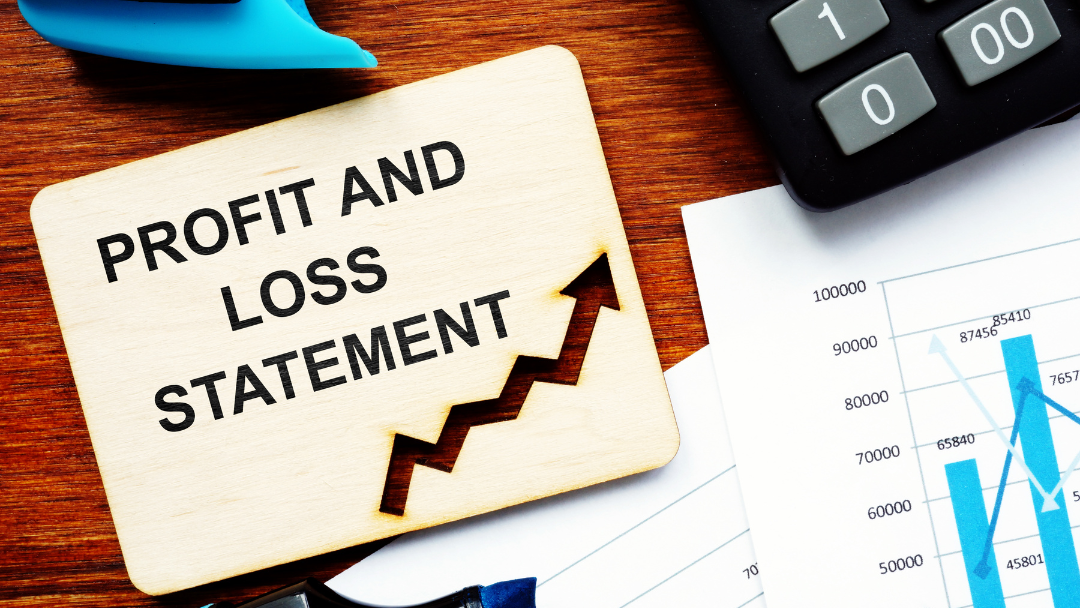What is a Profit and Loss Statement (P&L)?
A profit and loss statement (P&L), also known as an income statement or statement of earnings, is a financial statement that summarizes the revenues, costs, and expenses incurred during a defined time frame, usually a fiscal quarter or year. It provides information about a company’s ability to generate profit by increasing revenues, reducing costs, and managing expenses.
What are the Components of P&L Statement?
The components of a profit and loss statement, also known as an income statement, typically include:
1. Revenue: This represents the total amount of money earned by the company from its primary business activities, such as sales of products or services.
2. Cost of Goods Sold (COGS): This includes the direct costs incurred in producing or delivering the goods or services sold by the company, such as the cost of raw materials, labor, and manufacturing overhead.
3. Gross Profit: It is computed by deducting the cost of goods sold from the revenue. The amount of money left over after deducting the direct costs of producing the goods or services is known as the gross profit.
4. Operating Expenses: These are the costs incurred to support the day-to-day operations of the company, such as employee salaries, rent, utilities, marketing expenses, and administrative costs.
5. Operating Income: It is calculated by subtracting the operating expenses from the gross profit. Operating income represents the profit earned from the core operations of the company.
6. Non-Operating Income & Expenses: These consist of earnings or outlays unrelated to the business’s primary activities. Examples include interest income, interest expense, gains/losses from the sale of assets, and other miscellaneous income/expenses.
7. Net Income: It is calculated by subtracting the non-operating income/expenses from the operating income. Net income represents the overall profit or loss generated by the company after accounting for all revenue, expenses, and taxes.
8. Earnings Before Interest, Taxes, Depreciation, & Amortization (EBITDA): This is a measure of a company’s profitability that excludes the effects of interest, taxes, depreciation, and amortization. It provides a clearer picture of the company’s operating performance.
9. Taxes: This represents the amount of income taxes owed by the company on its taxable income.
10. Net Profit After Tax: It is calculated by subtracting the taxes from the net income. Net profit after tax is the final profit figure available for distribution to shareholders or for reinvestment in the company.
These components may vary depending on the specific accounting standards and reporting requirements of the company and the industry in which it operates.
What is the Purpose of a P&L Statement?
The purpose of a Profit & Loss (P&L) statement, also known as a statement of operations, is to provide a summary of a company’s revenues, expenses, and net income (or net loss) over a specific period of time. It is a financial statement that helps assess the financial performance and profitability of a business. The main purposes of a P&L statement are:
1. Evaluation of Profitability: The P&L statement helps determine whether a company has made a profit or incurred a loss during a specific period. It shows the total revenues generated from the sale of goods or services, as well as the total expenses incurred in running the business. By subtracting the expenses from the revenues, the net income or net loss is calculated, providing insights into the profitability of the company.
2. Analysis of Revenue Sources: The P&L statement categorizes the revenues into different sources, such as sales of products, services, or any other income-generating activities. By analyzing the revenue sources, a company can identify its most profitable products or services and make informed decisions regarding sales and marketing strategies.
3. Expense Management: The P&L statement helps in assessing and managing various expenses incurred by a company, such as costs of goods sold, operating expenses, interest expenses, and taxes. By analyzing these expenses, management can identify areas of inefficiency or opportunities for cost-saving measures.
4. Financial Forecasting & Decision-Making: The P&L statement provides historical financial data that can be used for forecasting future financial performance. It helps in making informed decisions regarding pricing strategies, expansion plans, budgeting, and investment decisions.
5. Investor & Stakeholder Analysis: The P&L statement is a key financial statement that is often reviewed by potential investors, creditors, and other stakeholders. It helps them assess the financial health and profitability of a company, and make informed decisions about investments or partnerships.
Overall, the purpose of a P&L statement is to provide a comprehensive overview of a company’s financial performance, assess profitability, and assist in making informed business decisions.
Benefits of Profit & Loss Statement
There are several benefits of a profit and loss statement, also known as an income statement. These include:
1. Financial Performance Evaluation: A profit and loss statement provides a snapshot of a company’s financial performance over a specific period. It allows business owners and managers to assess whether the company is making a profit or loss, and how efficiently it is generating revenue and controlling expenses.
2. Decision Making Tool: By analyzing the information in a profit and loss statement, businesses can make informed decisions about pricing strategies, cost-cutting measures, investments, and expansion plans. It helps them identify areas of strength and weakness within the company’s operations.
3. Benchmarking & Comparison: Profit and loss statements provide an opportunity for businesses to benchmark and compare their financial performance against industry standards and competitors. It allows them to identify areas where they may be lagging behind or excelling, which can help in setting realistic goals and improving performance.
4. Financial Planning & Budgeting: A profit and loss statement is crucial in the process of financial planning and budgeting. It helps businesses forecast revenues, estimate expenses, and determine expected profits or losses. This enables effective budget allocation and resource management.
5. Investor & Creditor Confidence: Investors and creditors often rely on profit and loss statements to assess a company’s financial health and viability. It demonstrates the company’s ability to generate profits and manage expenses, which influences their confidence in the company’s ability to meet financial obligations.
6. Tax Compliance: Profit and loss statements provide essential financial information required for tax compliance. They help businesses calculate taxable income and determine the amount of tax owed to the government, ensuring compliance with tax regulations.
Overall, profit and loss statements play a vital role in financial management and decision-making, offering insights into the financial performance of a business and helping drive its success.
Profit and Loss Statement V/S Balance Sheet
Profit and Loss Statement (P&L) and Balance Sheet are two important financial statements that provide information about a company’s performance and financial position. Some of the key differences are:
1. Purpose: The P&L statement shows a company’s revenues, expenses, and net income or loss over a specific period (usually one year). It provides insights into a company’s profitability. On the other hand, the Balance Sheet presents a snapshot of a company’s financial position at a specific point in time, including its assets, liabilities, and shareholders’ equity.
2. Timeframe: The P&L statement covers a specific period, typically a year, while the Balance Sheet represents a company’s financial position at a specific date, usually the end of a reporting period, often the end of a year.
3. Information Provided: A P&L statement includes revenue, cost of sales, operating expenses, interest expense, taxes, and other income and expenses. It ultimately shows the company’s net income (or loss) for the period. A Balance Sheet provides information about a company’s assets (current and long-term), liabilities (current and long-term), and shareholders’ equity.
4. Focus: The P&L statement focuses on the company’s revenue and expenses during a particular period and highlights its profitability. In contrast, the Balance Sheet provides a broader view of the company’s overall financial health by presenting its assets, liabilities, and equity.
5. Interdependence: While the P&L statement and Balance Sheet are separate financial statements, they are interconnected. The net income from the P&L is transferred to the Balance Sheet as retained earnings, ultimately affecting the company’s equity section.
In summary, the P&L statement represents a company’s profitability over a specific period, while the Balance Sheet provides a snapshot of its financial position at a given point in time. Both statements are essential for understanding a company’s financial performance and overall financial health.
When to Prepare a Profit and Loss Statement?
A profit and loss statement should be prepared on a regular basis to track the financial performance of a business. Typically, it is prepared at the end of each accounting period, which could be monthly, quarterly, or annually.
It helps business owners and stakeholders analyze revenues, expenses, and net income to evaluate the profitability of the company and make informed decisions. Additionally, a profit and loss statement may be required by lenders, investors, or tax authorities.
Are all companies required to prepare P&L statements?
No, not all companies are required to prepare P&L (Profit and Loss) statements. The requirement to prepare P&L statements depends on various factors such as the size and legal structure of the company, industry regulations, and local laws.
In many countries, publicly-traded companies are required to prepare and disclose P&L statements as part of their financial reporting obligations. Additionally, some jurisdictions may require certain types of companies or industries to prepare these statements for tax or regulatory purposes. However, small businesses and privately-held companies may not have a legal obligation to prepare P&L statements unless it is specified by local laws or necessary for tax purposes. Nonetheless, P&L statements are commonly prepared by companies as they are crucial for assessing the financial performance and profitability of a business.
SUMMING UP
Profit and loss statements play a vital role in assessing financial performance, making informed decisions, monitoring expenses, understanding revenue sources, complying with regulations, and attracting investors. They provide valuable insights into a company’s financial health and are essential for effective financial management.

